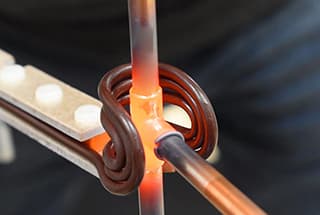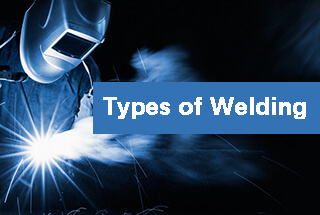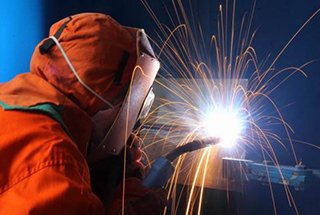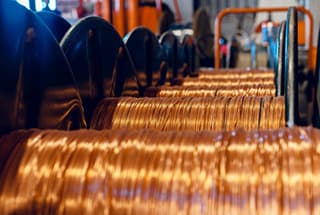
Ever wondered why aluminum brazing is crucial in modern manufacturing? This article dives into the intricate process of aluminum brazing, exploring its methods, benefits, and challenges. From the basics of filler metals and fluxes to advanced techniques like vacuum and salt bath brazing, discover how this technology enhances product quality and efficiency. Gain insights into the latest advancements and their wide-ranging applications, equipping you with essential knowledge to understand and leverage aluminum brazing in various industries.
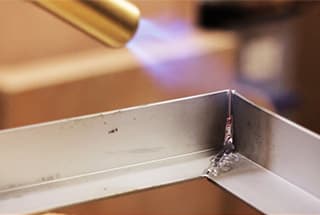
Abstract: The recent technical advancements in aluminum and aluminum alloy brazing have been reviewed in terms of brazing methods, filler metals, and fluxes, and their respective development directions have been introduced.
It is noted that the brazing of aluminum and aluminum alloys is a rapidly developing field of research and has a wide range of applications. The brazing technology for aluminum and aluminum alloys is attracting increased attention and is seen to have significant potential.

Aluminum alloys are a popular choice in various industries due to their low density, high strength, and excellent resistance to corrosion. They are widely used in automobiles, high-speed railway vehicles, aerospace, and military applications.
Related reading: Types of Aluminum and Aluminum Alloy
The unique physical and chemical properties of aluminum alloys can result in various difficulties during the welding process, such as oxidation, hot cracks, and pores in the weld. The traditional method for welding aluminum alloys is fusion welding, which requires complex equipment and highly skilled welders with strict technical requirements.
Related reading: Aluminum Alloy Welding Method and Material Selection
Aluminum brazing is a crucial method of connecting aluminum alloys and is known for its minimal deformation of the brazed parts. In recent years, it has gained widespread use in China due to its high dimensional accuracy.
The brazing technology for aluminum and aluminum alloys has been the subject of extensive research in recent years, leading to rapid advancements in brazing methods, filler metals, and fluxes.
The brazing of aluminum and aluminum alloys is a rapidly developing field due to its excellent properties, such as high strength, good corrosion resistance, high conductivity, and thermal conductivity. As a result, it is being used increasingly in various industries, including aerospace, aviation, electronics, metallurgy, machinery manufacturing, and light industry.
In some cases, the use of aluminum has replaced copper and steel, driven by the substantial increase in the cost of copper materials and the desire to reduce weight, improve efficiency, and enhance aesthetics. One example of this is the replacement of the copper water tank in automobiles with an aluminum water tank.
In China, there are only a few manufacturers of large-scale aluminum flux, and most of the aluminum flux used is imported from overseas.
Aluminum and aluminum alloys have a low melting point, strong chemical reactivity, and a high melting point, which makes it difficult to use traditional brazing fluxes. Therefore, special brazing fluxes for aluminum and aluminum alloys must be used to ensure proper brazing.
Furthermore, the corrosion resistance of aluminum and aluminum alloy brazed joints can be easily compromised by the use of solder and flux. This is because there is a significant difference in electrode potential between the solder and base metal, which reduces the corrosion resistance of the joint, especially in the case of soft solder joints.
Most fluxes used to remove the oxide film on the surface of aluminum and its alloys contain materials that are highly corrosive. Even if these materials are cleaned after brazing, it is challenging to completely eliminate their impact on the corrosion resistance of the joint.

Aluminum and aluminum alloys can be brazed using flame brazing, furnace brazing, or salt bath brazing.
Flame brazing is a popular method due to its simple equipment, versatility in terms of gas source, and wide range of applications. It is mainly used for brazing small components and for single-piece production. There are many types of flames available, including a new type of gas called Sharp gas, which is a result of cooperation between China and other countries. This gas has a soft flame and is a good heating source for aluminum brazing, as it falls between the strengths of liquefied gas and oxyacetylene. However, compared to other connection methods, the heating temperature for aluminum and aluminum alloy flame brazing is challenging to control, requiring higher levels of experience from the operator.
Salt bath brazing offers fast and uniform heating, minimal deformation of the components, and effective film removal, resulting in high-quality brazed components with high production efficiency. This method is particularly suitable for mass production and for welding dense structures. Paste, foil solder, or solder coating are commonly used for aluminum salt bath brazing. The solder coating is typically composed of Al Si eutectic or Al Si hypoeutectic compositions.
At present, brazing production mainly uses filler metal cladding, which can improve production efficiency and ensure the quality of the brazed components.

Brazing has some limitations:
Firstly, the intricate design of some components can make it challenging to access the salt bath, limiting design options and complicating the brazing process. This can also make it difficult to guarantee brazing quality.
Secondly, while salt bath brazing may meet strict corrosion resistance requirements, it can result in a large amount of flux residue on the component, requiring extensive cleaning. Additionally, the salt bath brazing equipment is costly and the process is complex, leading to a long production cycle.
Furnace brazing in air offers a low-cost equipment investment and a straightforward brazing process that is easy to manage. However, the heating process is slow and the component surface may oxidize when exposed to air, especially at high temperatures. This makes it challenging to remove the flux film and the flux may also fail due to moisture in the air during heating.
To overcome these challenges, furnace brazing in dry air and vacuum brazing in a protective atmosphere have been developed and have gained widespread use in the brazing of aluminum and aluminum alloys. These methods offer improved processes and have experienced rapid growth in recent years.
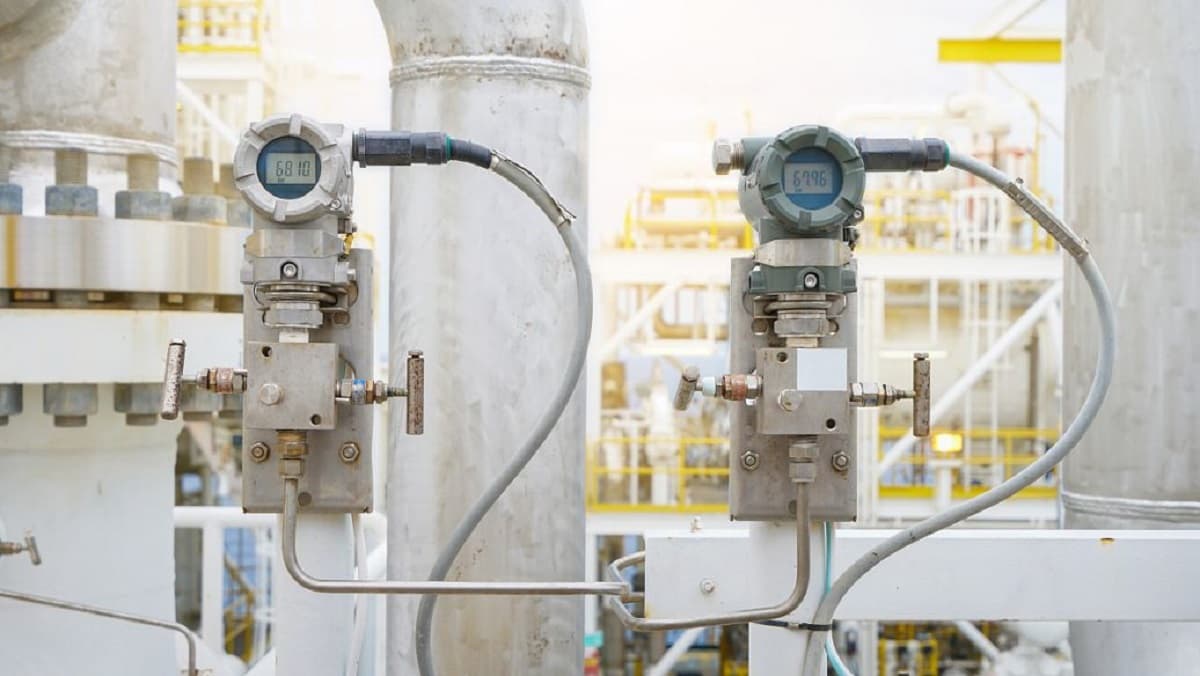
Aluminum is known for being active and easily forming a dense oxide film on its surface.
During the brazing process, it can be challenging to remove oxides solely through vacuum conditions. As a result, metal activators such as Mg and Bi must be utilized.
It is widely accepted that the removal mechanism of the activator works as follows:
Firstly, the activator reacts with residual O and HO in the vacuum, neutralizing their harmful effects on aluminum brazing.
Secondly, Mg vapor penetrates into the material layer beneath the film and forms a low melting point Al Si Mg alloy along with diffused Si.
During brazing, the melting of the alloy breaks the bond between the oxide film and the base material, allowing the melted solder to wet the base material, spread on it beneath the film, and lift the surface oxide film, effectively removing it.
When vacuum brazing aluminum alloys, the vacuum furnace should be chosen based on factors such as productivity, cost, weldment size, and structure.
It is important to thoroughly clean the weldment prior to brazing. The surface oxide can be removed using acid or alkali, and oil stains can be wiped away with alcohol.
For filler metal preparation, sandpaper is often used to remove the surface oxide film, followed by cleaning with alcohol to remove oil stains.
For larger workpieces, preheating is recommended before welding to ensure even heating of all parts before reaching the brazing temperature.
Vacuum brazing of aluminum alloys is heavily dependent on the Mg activator to remove the oxide film. To ensure that the base metal is fully exposed to Mg vapor in weldments with complex structures, some domestic units have adopted supplementary measures such as local shielding, resulting in improved brazing quality.
One common method is to place the workpiece inside a stainless steel cover with Mg chips, and then into the vacuum brazing furnace for brazing. This can significantly enhance brazing quality.
Vacuum degree is the most crucial and challenging process parameter to control in vacuum brazing. In order to achieve high-quality joints, the vacuum degree is largely dependent on the size of the workpiece.
Based on years of experience from some experts, it is advised that if the brazing equipment has not been used for an extended period, the vacuum furnace should be operated for several hours before use. In regular use, especially for batch production, it is recommended to keep the time interval between uses as short as possible to ensure that the vacuum degree of the vacuum furnace meets requirements easily and quickly.
While vacuum brazing is an effective brazing method, it also has some limitations such as complex and expensive equipment and the difficulty in maintaining the vacuum system.
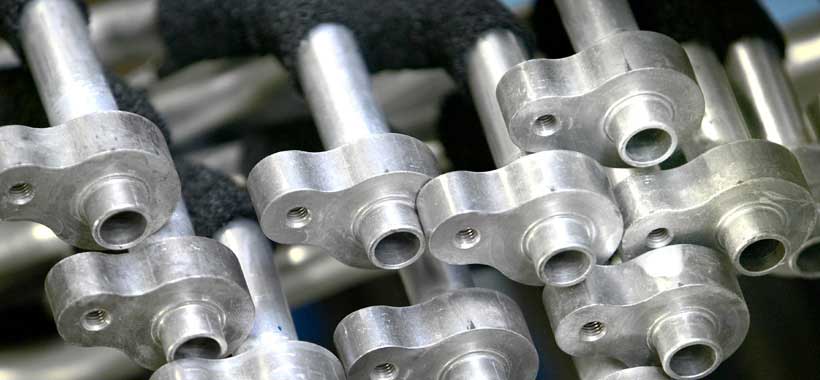
The use of aluminum vacuum brazing is limited due to the costly equipment and complex technology involved. To address this issue, a neutral atmosphere can be substituted for the vacuum. This reduces the requirements for the system’s leakage rate and the complexity of the equipment. Additionally, it reduces equipment maintenance problems caused by volatile element deposition, resulting in a lower production cost.
Heating in this method is mainly achieved through current and is fast and uniform. This not only guarantees product quality, but also improves productivity.
Neutral gas shielded aluminum brazing has gained increased attention and seen rapid development in recent years. It is considered a promising aluminum brazing method.
The film removal mechanism for gas shielded brazing of aluminum alloys is similar to that of aluminum vacuum brazing and is mainly accomplished using Mg activator. The brazing quality can be improved by adding Bi to the filler metal.
Argon and pure nitrogen, with a purity greater than 99.99%, are commonly used as the atmosphere for aluminum alloy gas shielded brazing.
For Al/Al and Al/Cu joints, it has been reported that an effective bonding method is to use the principle of diffusion brazing. A mixed powder composed of Si and potassium aluminum fluoride brazing flux is sprayed onto the aluminum surface in a nitrogen atmosphere close to atmospheric pressure for brazing. Si can be substituted with other low melting point eutectic metals, such as Cu, Ge, or Zn, that form with Al.
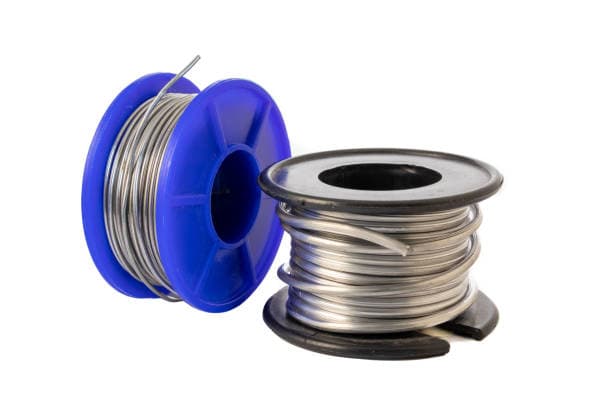
During brazing, the connection between weldments is made by the solidification of melted solder. As a result, the quality of the weld largely depends on the filler metal used.
The primary aluminum filler metal is Al Si alloy, but sometimes Cu, Zn, Ge, and other elements are added to enhance the performance of the process.
With years of experience and experimentation, multiple series of aluminum brazing filler metals have been developed, many of which have produced satisfactory results with the right processes.
In the following, we will introduce some of the most commonly used aluminum alloy brazing filler metals.
The Al Si series solders are based on the Al Si eutectic composition and also include hypoeutectic, hypereutectic, and Al Si alloys with no more than 5% added elements. These solders are highly soldered, strong, have a similar color and luster to the base metal, offer plating and corrosion resistance, and are considered a good choice for soldering.
Additionally, this series of solders can be modified, which significantly improves their toughness and bending performance in solder joints.
Recently, a new type of Al Si alloy brazing filler metal has been developed using rapid solidification technology. This brazing filler metal has a lower liquid phase point, around 3-5°C, compared to ordinary crystalline brazing filler metals with the same composition. Its wettability coefficient has increased by 18%, and its strength has increased by 28.4%. Its fluctuations are also minimal, providing a certain degree of processing flexibility.
Copper welding is performed based on the principle of contact reactive brazing. Currently, aluminum contact reactive brazing is considered to be the ideal solution for aluminum brazing problems.
This method offers several benefits, including:
① No need for flux, making it environmentally friendly and avoiding contamination of the brazing products. There’s no need to clean the brazed products, and no chemical corrosion in the brazing seam.
② Selecting the appropriate eutectic reactive alloy layer can lower the brazing temperature, reducing energy consumption, making the brazing process easier to control, and having low equipment requirements.
The contact reaction of Cu on the aluminum substrate has a noticeable surface preferential spreading, breaking the oxide film, and promoting the formation of a uniform liquid phase filler layer between the joint interfaces in the contact reactive brazing process. On the other hand, the grain boundary with contact reaction in the depth direction of the aluminum matrix preferentially penetrates, ensuring the bonding strength of the brazed joint.
Data shows that appropriate process parameters for aluminum contact reactive brazing with Cu as the interlayer material are a brazing temperature of 570-580°C and a holding time of 15-20 minutes. However, the electrochemical corrosion resistance of Cu-welded joints is poor, and the eutectic reaction layer is brittle.
To improve the performance of Cu as a filler metal, other elements can be added, such as Ag, Ni, Si, Zn, Ti, etc. The filler metal for reactive brazing with aluminum alloys includes these elements.
To address the limitations of using Zn and Cu as filler metals separately, a composite layer of both can be utilized. Contact eutectic reaction brazing is performed using the Cu and Zn composite layer.
A peritectic reaction occurs at the Cu/Zn interface, while an eutectic reaction occurs at the Cu/Al interface, forming an eutectic liquid phase that breaks the oxide film on the aluminum surface.
When using Cu and Zn as a reactive filler metal for aluminum brazing, the appropriate content of both metals in the composite layer is crucial. It has been suggested that the best brazing results are achieved when the thickness of the Zn layer is 0.2mm and the thickness of the Cu layer is less than 0.1mm.
At this point, the reaction layer not only breaks the oxide film but also provides strong electrochemical corrosion resistance and high shear strength.
The liquid phase point temperature range of the solder is between 500-577°C. When Cu is added to the Al Si solder, its fluidity is greatly improved.
However, due to the high content of CuAl2 intermetallic compound, this ternary eutectic solder is very brittle and is only suitable for casting into strips, making it difficult to process into wire or foil form.
Adding Zn to Al Si filler metal enhances its wettability and fluidity. As the Zn concentration increases, the solubility of Si decreases rapidly. As there are no compounds in the filler metal, its hot workability is better compared to the Al Si Cu system.
The liquid-phase temperature range of the solder is 400-500°C, which is close to the range of aluminum alloy solder. The Al Cu Ag ternary eutectic composition gives the filler metal a color that is very close to the Al base metal.
This filler metal has good fluidity, but is relatively brittle. Another ternary system is the Al Cu Zn filler metal, which also has a color close to the base metal and can produce better machined parts.
Adding 0.05% – 0.08% (by mass) of Mg, 0.05% of Ni, or 0.05% of Cr to the filler metal can improve its corrosion resistance.
There are many more ideal filler metals for aluminum, but in general, most existing aluminum brazing filler metals have a melting point that is close to that of aluminum alloys.
As a result, it is a challenge for most welding workers to find a filler metal with a lower melting point and improved technological performance.

Aluminum is relatively active, and its surface easily forms a dense and chemically stable oxide layer, which is a major obstacle in aluminum and aluminum alloy brazing. To achieve high-quality joints, the oxide on the surface must be removed.
When brazing aluminum and its alloys, using a brazing flux can remove the oxide film on the aluminum surface and reduce the interfacial tension between the filler metal and the base metal.
The brazing flux for aluminum is divided into soft soldering flux and brazing flux, with the latter being used for brazing temperatures higher than 450°C and the former for temperatures lower than 450°C.
The rapidly developing Nocolok aluminum brazing flux is introduced below. The traditional aluminum brazing flux is mainly a chlorine salt brazing flux, usually based on the LiCl-KCl or LiCl-KCl-NaCl system. This flux has the advantages of high activity, stability during heating, and not easily losing its effectiveness. It can be used with various heating sources, making it convenient and inexpensive.
However, the disadvantage of this flux is that the presence of Cl ions causes strong electrochemical corrosion to the base metal, has strong moisture absorption, and is difficult to preserve.
Therefore, it is crucial to clean the residues when using this type of flux for brazing.
In the late 1970s, the development of a non-corrosive and insoluble brazing flux was rapidly underway. This flux is synthesized using the A-KF eutectic, and its solubility in water is minimal.
It avoids the disadvantage of chloride flux, which easily absorbs moisture, and has very little corrosiveness, leading to its nickname of Nocolok flux.
Nocolok flux is a fine white powder, primarily made up of a mixture of potassium fluoaluminate that may contain crystal water.
The molten flux dissolves the oxides on the aluminum surface and prevents re-oxidation. Under the influence of the flux, the filler metal penetrates the joint surface freely through capillarity.
After cooling, the flux forms a paste film with strong adhesion on the surface of the component. The residual layer of the flux is non-hygroscopic, non-corrosive, and insoluble in aqueous solvents.
While the solubility of potassium fluoaluminate flux in water is minimal, its thermal stability is not strong and chemical reactions will occur when heated in air.
In recent years, many studies have focused on improving the Nocolok method in two main ways: adding additional salts to the potassium fluoaluminate flux to enhance its activity and other properties, and developing new methods of using the potassium fluoaluminate flux.
Si can enhance the activity of the potassium fluoaluminate flux.
The ideal way is to add it in the form of K2SiF6, but the amount of excess KF should be calculated.
When W (Si)>2%, it can self drill.
Adding K2GeF6, SnF2, ZnF2, etc. can improve the activity of the flux, especially K2GeF6.
In the improvement of Nocolok, someone mixed the filler metal powder with this kind of flux.
Others regard KAlF4 as the method of gas phase brazing:
One is to directly mix KAlF4 vapor into the low-pressure non oxygen atmosphere for aluminum alloy brazing;
The other is to vacuum deposit a layer of KA1F4 on the outside of aluminum parts, and then assemble and re braze as required.
The composite solder formed by depositing a layer of KAlF4 flux on the surface of Al Si eutectic solder powder can be mixed into solder paste with organic solvent.
The brazing of aluminum and aluminum alloys has been extensively studied and rapidly developed in recent years.
Foreign scholars have demonstrated the exceptional bonding strength of Sn-Zn eutectic solder (8.9%) when brazing aluminum alloys below 350°C by investigating the interface reaction between the liquid-phase Sn-Zn eutectic alloy and Al.
The diffusion brazing of aluminum has also received considerable attention in recent years.
One approach involves spraying a mixed powder composed of Si and potassium aluminum fluoride flux on the surface of Al, and brazing in a N2 atmosphere close to atmospheric pressure.
Among the materials used, Si can be substituted with Cu, Ge, Zn, and other metals that form low-melting point eutectics with aluminum.
This method can be utilized to braze Al/Al, Al/Cu, Cu/Cu, and Cu/brass joints.
Diffusion brazing is also used to weld Al-Si alloy castings, solving the issue of corrosion and poor wetting of Al alloy castings in molten solder.
There is still much progress to be made in aluminum and aluminum alloy brazing technology, and some advancements have already been applied to practical production.
The application of aluminum and aluminum alloy brazing technology is primarily focused on aluminum radiators, aluminum-stainless steel dissimilar materials, aluminum alloy door frames of microwaves, and other products.
Another research and application area is the brazing of aluminum-stainless steel composite pot bottoms.
Although aluminum and aluminum alloy brazing is an excellent joining technology, there are still many challenges to be addressed.

